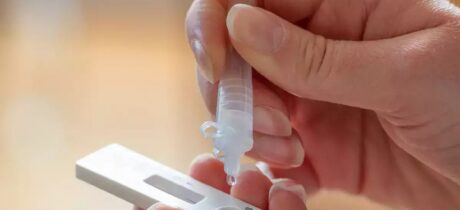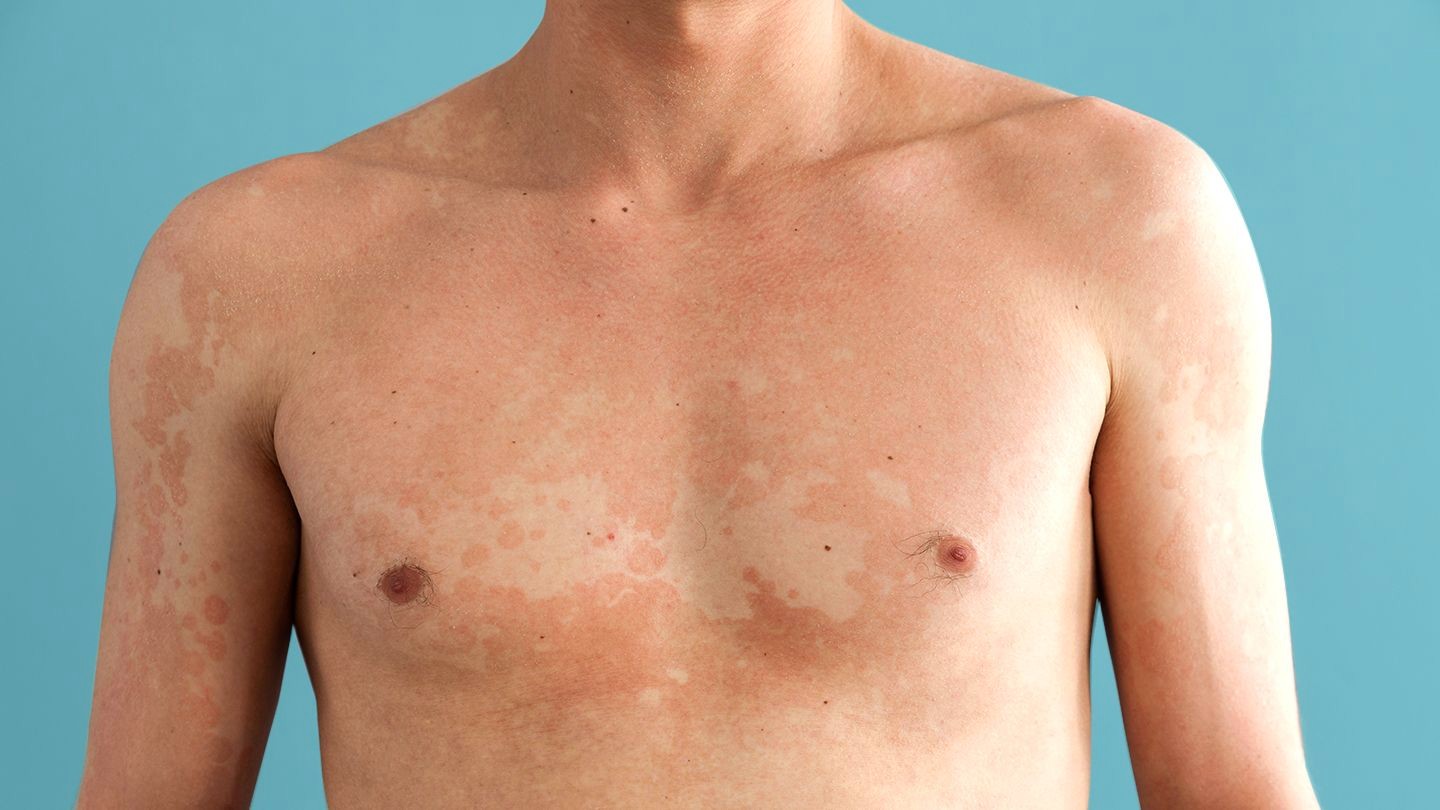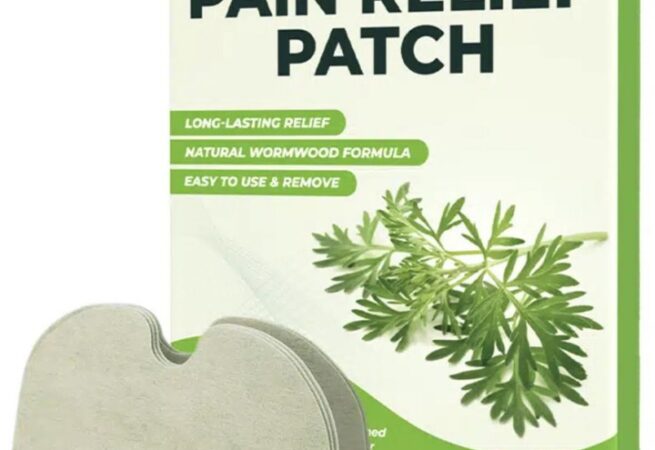

Tinea Versicolor: Causes, Symptoms, & Treatment
What Is Tinea Versicolor?
Tinea versicolor is a fungal infection that causes tiny patches of discoloured spots on the skin. It’s also known as pityriasis versicolor. It’s caused by a kind of yeast that naturally lives on the skin. When the yeast grows beyond control, the skin disease, which appears as a rash, is the consequence.
Signs and Symptoms of Tinea Versicolor
Acidic bleach from the growing yeast causes areas of skin to be a different colour than the skin around them. They can be small spots or patches. The symptoms and signs of infection are:
- Patches that appear red, pink, white or brown and may be darker or lighter than the skin around them.
- Spots that don’t tan the way the rest of your skin does.
- Spots that pop up more boldly when you do tan.
- Spots that can occur anywhere on your body but are commonly noticed on your chest, neck, back, and arms.
The spots may disappear during cold weather, but they can get worse during warm and humid weather.
Similar conditions
Some skin conditions have symptoms that look like tinea versicolor. These include:
- Vitiligo: It is a condition that makes you lose your skin colour
- Pityriasis rosea: It is a rash that can cause tiny spots that spread across your body in the shape of a tree
These conditions have features that clue your doctor into what you have, like the texture and rash pattern.
Tinea Versicolor Causes
The yeast responsible for tinea versicoloror, Malassezia, develops on normal healthy skin. However, these factors can cause an overgrowth that causes the infection:
- Oily skin
- Living in a hot climate
- Sweating a lot
- Hormonal changes
- A weak immune system
Since the yeast naturally grows on your skin, tinea versicolor isn’t transmissible. It can affect people of any skin colour. It is typically seen in teenagers as well as young people. For some people, it may cause emotional distress and feelings of self-consciousness.
Tinea Versicolor Treatment
How do dermatologists diagnose tinea versicolor?
A doctor can diagnose tinea versicolor based on how the rash looks like.
If they need more details, the following tests can help:
- Wood lamp (black light) examination: The doctor uses ultraviolet light, which may make the affected areas appear as a fluorescent coppery orange colour if it is the result of tinea versicolor.
- Microscopy using potassium hydroxide (KOH): The doctor will remove the cells from your skin, soak them in potassium hydroxide, and then analyse them under a microscope.
- Skin biopsy: The doctor will take an adipose tissue sample by scraping a small amount of skin and scales from the affected area for examination under a microscope. In the case of children, the doctor may remove skin cells by first firmly attaching transparent tape over the affected area before removing it. The sample can then be put directly onto a slide for examination with a microscope.
How do dermatologists treat tinea versicolor?
The treatment a dermatologist prescribes is based on a variety of factors. These include where the tinea versicolor appears on your body, how much of your skin is affected by tinea versicolor, how thick the spots have grown and the climate.
Treatment for tinea versicolor may include the following:
- Medicine applied to the skin: This is the most frequently used treatment. There are anti-fungal soaps, shampoos, creams, and lotions that can keep the yeast in control. They contain active ingredients such as selenium sulphide, ketoconazole or pyrithione zinc.
- Medicated cleansers: Tinea versicolor often returns, particularly if a person lives in a humid and warm place. Using a medicated cleanser at least once or twice a month, especially during hot and humid times, will stop the yeast from growing again.
- Anti-fungal medications: A dermatologist may prescribe these medications if tinea versicolor covers a significant area of the body, is thick or often reoccurs after it is treated. These medications are used for a limited time. During this period, your dermatologist will monitor you.
- Antifungal Soaps: There are several options available in the Indian market, but Ketoconazole-based soaps are considered the best antifungal soap in India for treating Tinea Versicolor.
Outcome
With treatment, the yeast is easy to kill. But, the skin can stay lighter (or darker) for a few weeks or even months. However, the skin will eventually return to its normal colour. To even out your skin’s tone, protect your skin from the sun and not tan.
Tinea versicolor can return. When the outdoor air is humid and hot, it is possible for the yeast to increase in size and become out of control. Some people who live in a tropical climate may need to apply a medicated cleanser year-round to prevent the yeast from over-growing. People who live in an area that becomes moist and warm each spring may see tinea versicolor come back every year.
Lifestyle Tips for Managing Tinea Versicolor
Episodes are very common since the yeast that causes the infection is a normal fungus that lives on your skin. You might use the medicated cleanser once a week for about 10 minutes for a few months to help prevent tinea versicolor from returning. It is possible to use these products if the infection keeps returning, especially for those who live in a humid and warm area.
If the condition is mild, it is possible to treat it yourself. There are anti-fungal products that you can purchase without a prescription. They include:
- Shampoo that contains selenium sulphide
- Anti-fungal cream or ointment that contains miconazole, clotrimazole or terbinafine.
When using these products, dermatologists suggest the following:
- Wash and dry the affected skin
- Apply a thin layer of the anti-fungal cream or ointment. Apply it at least once or twice a day for at least two weeks.
- If you are using a shampoo, leave it on your scalp for 5 to 10 minutes before cleaning it off.
- If you have oily skin, it’s best to use a dermatologist-recommended soap for oily skin to help manage the condition.
Some people require stronger medication which is why they consult a dermatologist. If you choose to treat yourself or consult a dermatologist, these guidelines will help you achieve better outcomes:
- Avoid using skin care products that are oily. Make sure you use oil-free products. The label may also read “non-comedogenic.”
- Wear loose clothes. Nothing should feel tight.
- Make sure your skin is protected from the sun. A tan makes tinea versicolor easier to spot.
- Avoid using a tanning bed or sun lamp. Again, a tan makes tinea versicolor more visible.
How can you protect your skin from the sun
To achieve the most effective results, it is essential to protect your skin from the sun. For this, apply sunscreen daily. Make sure that you apply sunscreen for at least 20 minutes before leaving. And apply it to all skin that will not be covered by clothes. Make sure you use a sunscreen that provides:
- UVA and UVB protection (label may read broad-spectrum)
- Sun Protection Factor (SPF) of 30 or more
- Non-greasy formula (label may say “oil-free” or “non-comedogenic”)

The Empowerment of Women’s Health: Nurturing Holistic Well-being
In today’s progressive era, women’s health has emerged as a pivotal topic, deserving special attention and care. The empowerment of women in all spheres of life is directly intertwined with their well-being, making it essential to prioritize and foster their physical, mental, and emotional health. Recognizing the unique challenges faced by women and embracing a holistic approach to their healthcare is key to ensuring a brighter and healthier future for all. In this article, we will explore various aspects of women’s health and highlight the importance of comprehensive care tailored to their specific needs.
Physical health forms the foundation of overall well-being, and women’s bodies undergo significant transformations throughout their lives. Regular medical check-ups, including reproductive health screenings and breast examinations, are vital for early detection and prevention of potential issues. Furthermore, adopting a healthy lifestyle through regular exercise, balanced nutrition, and adequate sleep is crucial for maintaining optimal physical health. Women should prioritize self-care and make informed choices about contraception, pregnancy planning, and sexual health to ensure their bodies are nurtured and protected.
Mental health is another critical facet of women’s well-being that deserves utmost attention. Women often bear the weight of multiple roles and responsibilities, and this can sometimes lead to stress, anxiety, or depression. Creating a supportive environment that encourages open dialogue and seeks to break the stigma surrounding mental health is paramount. Accessible mental health services, including therapy and counseling, should be readily available to help women navigate the complexities of their lives and build resilience. Empowering women to prioritize self-care and mental well-being will enable them to thrive and contribute fully to society.
Addressing women’s health also entails recognizing the unique challenges faced by different age groups. Adolescence marks the onset of several physical and emotional changes, making it vital to provide comprehensive sex education and support for young girls. Menstrual health education, access to sanitary products, and guidance on reproductive health are essential to ensure their smooth transition into womanhood. Similarly, during the reproductive years, comprehensive preconception, prenatal, and postnatal care is crucial to safeguard both the mother’s and child’s health. Supporting women through menopause, a phase that brings its own set of challenges, is equally important, ensuring women receive appropriate guidance and assistance to navigate this transformative period.
In addition to physical and mental well-being, it is imperative to acknowledge the social determinants that impact women’s health. Factors such as education, economic opportunities, and access to healthcare services significantly influence their overall quality of life. Promoting gender equality, bridging the wage gap, and providing equal opportunities for education and employment can positively impact women’s health outcomes. Additionally, ensuring access to affordable healthcare and eliminating barriers to care, such as transportation or child care, will empower women to seek the medical attention they need.
Women’s health cannot be discussed without considering the importance of preventive care. Regular screenings for cervical and breast cancer, vaccinations against HPV and other infectious diseases, and proactive measures to prevent osteoporosis and heart disease are essential components of preventive healthcare. Encouraging healthy habits, promoting self-examinations, and raising awareness about the early signs and symptoms of various health conditions can save lives and reduce the burden on healthcare systems.
In conclusion, the empowerment of women’s health goes beyond the boundaries of individual well-being. By prioritizing comprehensive care, including physical, mental, and social aspects, we can create a society that uplifts and supports women at every stage of their lives. Embracing a holistic approach to women’s health ensures that they are equipped to face challenges, pursue their dreams, and contribute meaningfully to society. It is our collective responsibility to advocate for and invest in the well-being of women, as their health is an indispensable asset for a prosperous and harmonious future.

Chin Surgery Must Be Done In The Best Hospital To Avoid Complications
Everyone wants to look beautiful, maybe through applying makeup or through surgery if you are not with any specific part of your body. Chin surgery is the most common one, and if you are not happy with the shape of your chin, then you need to find the place where is best for chin surgery (เสริมคางที่ไหนดี, which is the term in Thai) and how it can be done.
What Is The Process Of Chin Surgery?
An uneven chin looks inappropriate, so you need to find the best place for this surgery. If you have a small chin and want to make it a bit elongated to make it a bit attractive. So the process is,
At first, anesthesia is done in that particular place, an incision is made outside or inside the mouth, an implant is placed under the jawline to give a distinctive look, and stitches are done and once stitched after the dressing bandage is applied to get healed quickly.
What Are Its Side Effects?
- After the surgery, you can feel a tingling sensation, creating discomfort for a few days.
- The wound could open up anytime if you don’t follow the instructions carefully and perform any strenuous activity.
- Try not to sleep while pressing your chin, as your chin will get swollen and take time to heal immediately.
- Do the dressing every alternate day to avoid infection. Applying shaving foam in those affected areas can cause adverse problems.
If you are willing to make your chin elongate by a few centimeters, but the doctor is not allowing you to do it, then it’s better not to proceed with that as it can deform your chin, and you will look different. So it’s better to consult a professional doctor to guide you accurately.
Conclusion
Where is the best for chin surgery? It depends upon the physician and the clinic as well. The physician must have the license and experience to deal with complex cases. The hospital must be clean and must have good reviews regarding this surgery. Before booking an appointment, try to review the reviews and search for the best doctor for this surgery. It has to be done efficiently without thinking about the cost. The experienced physicians will charge you high, so try to go for it. After surgery, please maintain a few things to avoid any further issues.

The Importance of Prioritizing Women’s Health: Empowering Women for a Better Future
In today’s fast-paced world, women play an integral role in various aspects of life. From balancing careers and family to making significant contributions to society, women are an undeniable force of strength and resilience. However, amidst their daily responsibilities, it is crucial to acknowledge the significance of women’s health and well-being. As per the experts doing ABA therapy in New York, by prioritizing and empowering women’s health, we can ensure a brighter and more prosperous future for everyone.
Physical health forms the foundation of overall well-being, and women’s health encompasses a unique set of challenges and considerations. Starting from adolescence, women undergo biological changes like puberty, menstruation, and pregnancy that require specialized care and attention. Regular health check-ups, including pelvic exams and mammograms, are vital in detecting potential issues such as breast cancer or reproductive health conditions.
Additionally, mental health plays an equally important role in a woman’s overall well-being. Women face a myriad of psychological challenges, including higher rates of anxiety and depression. Society often places unrealistic expectations and pressures on women, such as striving for the perfect body image or juggling multiple roles without support. Prioritizing mental health through awareness, destigmatization, and access to mental health resources is crucial for women to thrive.
Reproductive health is another essential aspect of women’s well-being. Accessible and affordable contraception, family planning services, and comprehensive sex education are key factors in empowering women to make informed decisions about their bodies and reproductive choices. By providing the necessary tools and knowledge, we empower women to take control of their reproductive health, thereby reducing unintended pregnancies and improving overall family and societal outcomes.
Another critical component of women’s health is addressing the unique challenges faced by marginalized groups. Women of color, LGBTQ+ women, and women from low-income backgrounds often face disparities in healthcare access, quality, and affordability. It is imperative to recognize these disparities and work towards creating an inclusive healthcare system that provides equitable care to all women, regardless of their background or socio-economic status.
Promoting a healthy lifestyle is essential in maintaining women’s health and preventing various chronic diseases. Encouraging regular physical activity, a balanced diet, and sufficient sleep can have profound positive effects on both physical and mental well-being. By fostering a culture of self-care and healthy habits, we can empower women to prioritize their health and lead fulfilling lives.
Furthermore, advancements in medical research and technology have paved the way for groundbreaking discoveries in women’s health. Research dedicated to understanding women-specific conditions such as endometriosis, polycystic ovary syndrome (PCOS), and osteoporosis is crucial in developing effective treatments and interventions. Supporting and funding such research initiatives is vital to improve women’s health outcomes and reduce the burden of these conditions.
Lastly, women’s health extends beyond individual well-being; it has significant societal and economic implications. When women are healthy, they are more likely to participate actively in the workforce, contribute to economic growth, and engage in community development. By investing in women’s health, we invest in a prosperous future for everyone, as healthier women create healthier families, communities, and nations.
In conclusion, prioritizing women’s health is essential for empowering women and ensuring a better future. By addressing the unique challenges faced by women, promoting physical and mental well-being, providing comprehensive reproductive healthcare, and addressing disparities, we can create a society that values and supports women’s health. When women are healthy and empowered, they can reach their full potential, making significant contributions to society and inspiring future generations. Let us work together to prioritize women’s health and create a world where every woman can thrive.

Being by the Side of an Addict Requires some Knowledge as Well
Being a friend or family means sticking by thin and thick, especially if there is an addiction issue. As addiction causes multiple changes, both physical and psychological, the person might be violent, unresponsive or completely ignorant. As they go through severe alcohol withdrawal, they would need proper support from the loved ones.
- You have no power over the decisions made by others. You could think that it would be easier for the patient to prevent relapse if they would simply let others organize your appointments, assist with job applications, or handle this or that problem. Even so, it could be real. Yet the truth is that your buddy or relative needs to develop independent coping mechanisms independent of drugs and alcohol. Although it’s crucial to offer encouragement, remember that you cannot force someone to do anything. Attempting to force the matter will just result in unneeded tension.
- Simply showing up and showing you care is key. Your desire to assist a friend or loved one who is recovering says a lot about you and how much you want them to succeed in their recovery. Just by showing up and checking in, you can make a significant difference. Invite them out for coffee or a run, come over, or send them a text. Little by little, incorporate them into your life, and ask them to do the same.
- Recognize that not everything must alter. You may still conduct a lot of the same activities you used to do with your friend or loved one. You can hang out at their place or invite them over, work out together, go grocery shopping together, or just spend time and have fun. But it is not advised to drink around them, bring them to a bar, or take them anywhere else they will have access to drugs or alcohol.












